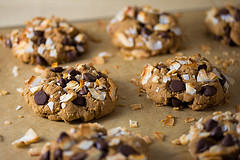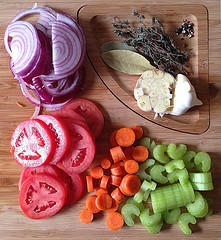If you’ve ever wondered how to get that deliciously moist, chewy cookie consistency that you normally only find at your favorite bakery, all it takes is a bit of inside knowledge. Here are some expert tips that will help you to bake better cookies at home.
- Use a high-quality cookie sheet. Although stainless steel cookie sheets are a bit pricier, they make all the difference when it comes to your cookies. Dark colored sheets may cause your cookies to burn on the bottom, which results in an overcooked, dry texture.
- Be sure to use soft butter. Many at-home bakers skip this step and use cold butter to save time, but letting the butter melt a bit can work wonders when it comes to the texture of your cookies.
- Know which ingredients to use for your desired consistency. If you like cookies that are thinner and crispier, add more sugar. For cake-like cookies you can add an extra egg, and for a coarse, crumbly texture, simply add baking soda.
- Only bake one sheet at a time. Baking multiple cookie sheets at once can cause them to bake inconsistently, so try to use only one sheet at a time. If you’re short on time you can bake a few sheets at once, but be sure to rotate them frequently.
Cookie Tips – Secrets to Making Perfect Cookies [What’s Cooking America]
Tips for Baking Perfect Cookies [Macrina Bakery]
Tip: The Secret to Baking Perfectly Browned Cookies Every Time [The Kitchn]
Tips for Getting That Perfect Cookie Texture [Baking Bites]



 Equal Housing Opportunity
Equal Housing Opportunity